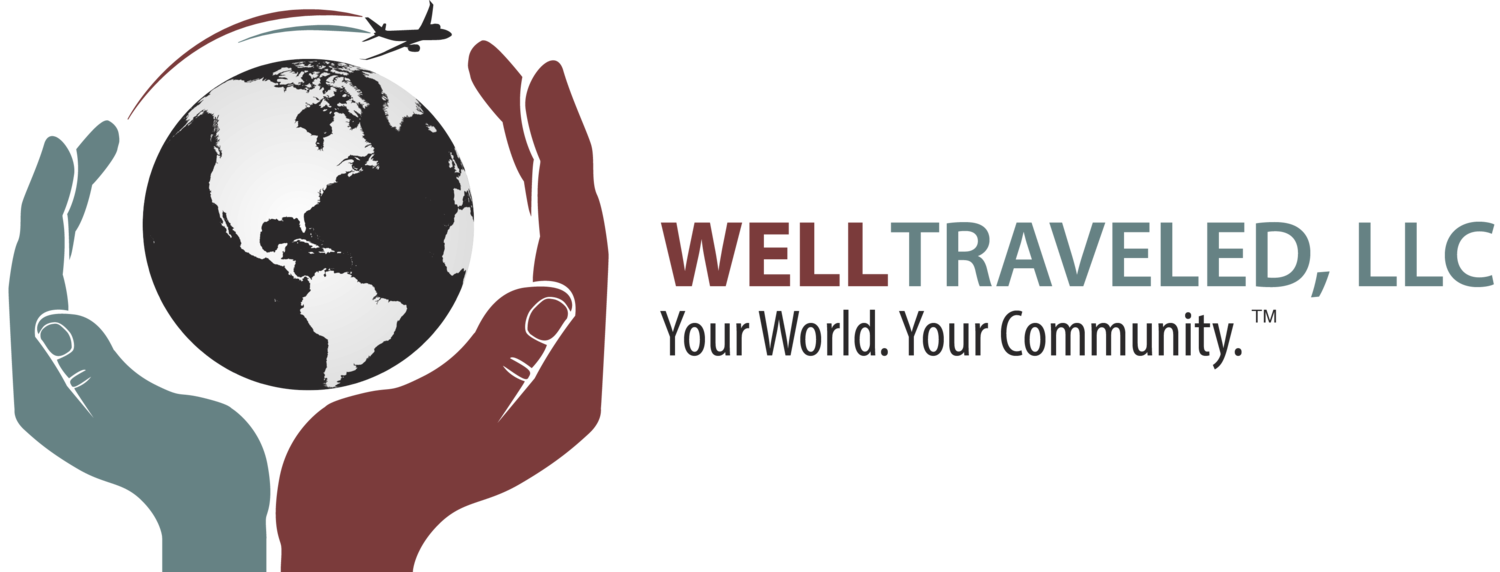I'm a stickler when it comes to budgets. I literally have spreadsheets on top of spreadsheets tracking dollars coming in and dollars going out. I drive my wife insane! I wasn’t always this way though. In fact, there was a time when I had no clue how to budget my money. Let me explain...
“Hey, can I borrow 150 Malaysian Ringget?” I found myself asking some of my friends. Malaysia was the sixth country I visited during my Semester at Sea voyage. I knew I was in trouble after the first country - Morocco. It was there that I realized I had spent way too much money. At one point, my funds were so limited that I had to forgo a meal in order to afford a taxi ride back to the ship. Don’t get me wrong - I still had a fantastic time circumnavigating the world. However, my priorities were somewhat backwards, which made traveling difficult. I created a budget, but couldn’t stick to it because it was unrealistic.
So, what is a budget?
Here at WellTraveled, we explain to our Scholars that a budget is an estimated summary of income or revenue and expenses over a specific period of time. Think of income as cash that you earned from working. This is cash coming into your wallet. On the flipside, think of expenses as items that decrease your income, such as a cell phone bill. This is cash going out of your wallet. A budget should list ALL of the expenses that you have.
Why is a budget important?
A budget helps us understand what our expenses are and how they will be covered.
It is important to remember that your expenses should never EVER be greater than your income. Many experts recommend that we live below our means. For example, if you earn $200 a month working on the weekends, you should be spending less than $200 a month.
In Dave Ramsey’s article, How Do You Stack Up Against These Shocking Money Statistics?, he points out that “57% of households don’t actually have a budget.” There are a number of reasons why this percentage is so high: lack of knowledge, fear of what one might find, simply lack of concern, etc. My reason for creating one six years ago was to account for all of my travel expenses abroad. Due to my lack of knowledge, it didn’t serve me well. I didn’t have any template or example of what a budget should look like. In fact, as a college student, I didn’t think I needed one. I wasn’t making much money from my campus job, but spent every penny from each paycheck that I received. I, for sure, needed a budget...
Creating a simple travel budget
Think of the word BUDGET as an acronym:
B - Be realistic in the amount you are able and willing to spend on a trip. Remember that your expenses should never EVER be greater than your income. Instead of taking a week-long trip to Paris, try taking a less expensive trip locally - at least until you have enough funds to pay for a more extravagant one.
U - Understand all of the expenses associated with the trip. You need to account for transportation, lodging, food, spending money and documentation, such as a passport and/or visa (if you’re traveling internationally).
D - Do your research to get accurate pricing for the expense items. Here, you want to make sure that you are getting the best deals. There are tons of apps and websites dedicated to finding reasonable prices. I use the app, Hopper, which tells me the best time to book my flights.
G - Get your budget into an easy-to-follow format. There are various resources online that provide budget templates, such as EveryDollar. However, I like to create mine from scratch in Microsoft Excel. If you are a first-timer, I suggest you create a simple chart similar to the one below.
E - Examine your budget thoroughly. Make sure that the numbers are accurate and realistic. Not doing this step was one of the reasons why I was asking my friends to borrow 150 Malaysian Ringget...
T - Track your expenses as you incur them. This step is crucial in making sure that you aren’t overspending.
So, I bet you are wondering if my friends loaned me that 150 Malaysian Ringget. They didn’t. However, while in Vietnam, they did loan me 400,000 Vietnamese Dong - that was about 20 U.S. Dollars...
Educators/Parents - Work with your students and/or children to identify the expenses associated for a local trip. Identify the expenses for an international trip. Help them brainstorm ways in which they can raise money to cover the cost of both trips.
Students - Identify the expenses associated for a local trip. Identify the expenses for an international trip. Brainstorm ways in which you can raise money to cover the cost of both trips. Once the expenses and income sources have been identified, create those budgets!
Stay Educated. Stay Empowered. Stay WellTraveled.



